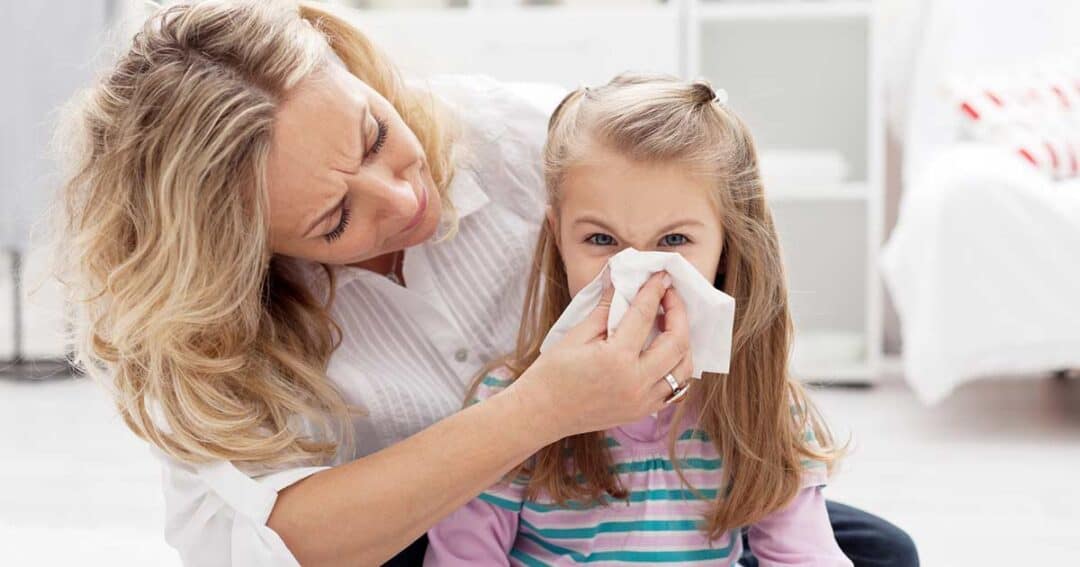520 E. Kendall Drive, Suite C - Yorkville, IL 60560


Welcome to Kati's Corner
Recent Posts
April Showers bring May flowers......and allergies!
Spring Allergies: Preparing for the Season Ahead
As the temperatures rise and the clocks change, we can all feel springtime is just around the corner. For those who suffer from allergies (or are parents of allergy sufferers), this season can be just as challenging as cold and flu season. As a mom myself, I understand the frustration of wondering, “Is this a cold or allergies?” That’s why I’m here to help you and my own family get prepared for the months ahead.
In the Midwest, our allergy season often starts in March and can last until June—meaning months of congestion, itchy eyes, and non-stop sneezing. Navigating the endless options in the pharmacy aisle can feel overwhelming, from antihistamines and nasal sprays to eye drops and decongestants. You’ve probably tried something before that worked—or maybe didn’t. The truth is, not all medications treat allergies the same way, which is why we’re here to help!
At Whole Child Pediatrics, we take the time to understand your unique symptoms, the timing of your flare-ups, and any treatments you’ve tried in the past. We’ll consider your daily routine, as well as your goal for symptom relief. With so much information available online and a range of over-the-counter products, let the Whole Child team help you choose the best options that fit your family’s lifestyle and budget.
How Do Allergies Work?
In the Midwest, pollen is the usual culprit. As trees and flowers bloom in spring, they release pollen into the air, which we breathe in. If you’re allergic to these airborne pollens, your immune system reacts, triggering inflammation and the allergy symptoms we all know too well.
Common Allergy Symptoms:
Red, itchy, watery eyes
Sneezing
Runny nose (rhinitis)
“Allergic shiners” (swelling around or under the eyes)
Post-nasal drip
Itchy, sore throat
Nasal congestion or sinus pressure
Sinus headaches
Fullness or pain in the ears
When treating children’s allergies, many parents seek natural remedies to help alleviate symptoms. While these options can be effective for mild to moderate symptoms, it's always important to consult with your healthcare provider before trying any new treatments, especially if your child has a history of severe allergies or asthma. Here are some natural ways to help manage children's allergies:
1. Local Honey
Some believe that consuming local honey can help build immunity to local pollen. The idea is that the small amounts of pollen in the honey can gradually desensitize the immune system. A small spoonful daily can be a tasty way to potentially reduce allergy symptoms. However, this method should be avoided in children under 1 year old due to the risk of botulism. Whole Child pediatrics has our beehive and our honey is available at The Natural Pharmacy.
2. Saline Nasal Rinse
Saline sprays or nasal rinses can help clear pollen, dust, and other allergens from a child’s nasal passages. This can reduce nasal congestion and help relieve symptoms like a runny nose or post-nasal drip. It’s important to use a child-friendly saline spray and make sure to follow the instructions carefully.
3. Probiotics
Probiotics can help support a healthy gut, which may, in turn, boost the immune system and reduce allergy symptoms. You can find child-friendly probiotic supplements, or you can include probiotic-rich foods like yogurt, kefir, and fermented vegetables in their diet.
4. Essential Oils
Essential oils like lavender, eucalyptus, and peppermint can help with respiratory symptoms, such as nasal congestion. You can use a diffuser to disperse these oils into the air or dilute them and apply them to a child’s chest or back (always dilute oils and ensure they are safe for children). However, be cautious, as some oils can cause skin irritation or allergic reactions.
5. Quercetin-Rich Foods
Quercetin is a natural antioxidant and anti-inflammatory found in foods like apples, onions, and citrus fruits. Quercetin is thought to block histamine release, potentially reducing allergy symptoms. Adding these foods to your child’s diet may provide relief, though for more severe allergies, it’s best to combine dietary changes with other treatments.
6. Air Purifiers
An air purifier with a HEPA filter can help remove pollen, dust, pet dander, and other allergens from the air in your home. This can be especially helpful for children with allergies, as it provides cleaner air and can help reduce exposure to triggers.
7. Diet and Hydration
Encourage your child to eat a balanced diet rich in fruits and vegetables, especially those high in vitamin C, such as citrus fruits, strawberries, and bell peppers. Staying hydrated can also help thin mucus and ease congestion.
8. Bathing and Changing Clothes
After your child has been outside, especially during high pollen days, make sure to have them change clothes and take a bath or shower to wash off any pollen that may have clung to their skin and hair. This can help reduce exposure to allergens inside the house.
While these natural remedies may help with mild symptoms, it’s important to remember that allergies can vary greatly in severity, and what works for one child may not work for another. If your child’s symptoms persist or worsen, it's essential to consult with a healthcare provider to determine the best course of action.
IF you or your child struggles with allergies, it might be time to come talk to Miss Kati, APRN, and let us help you navigate allergy season with ease.
Call to schedule an appointment today:
630-385-2360
